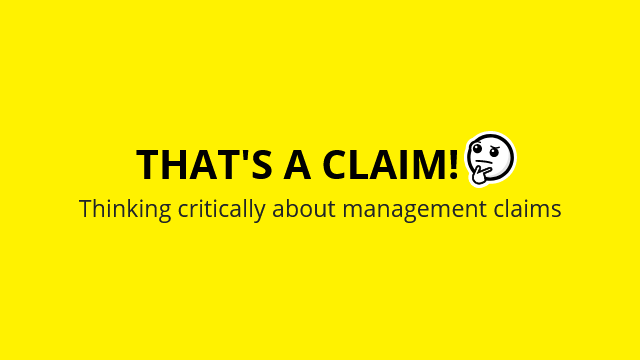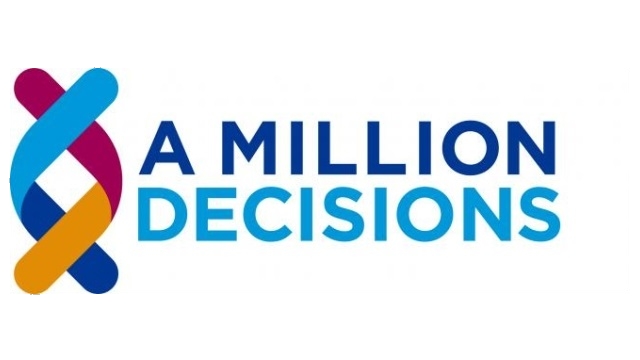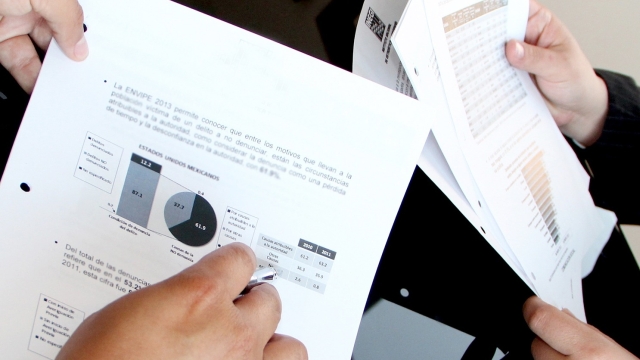
Quantifying the impact of knowledge management
This article is part of an ongoing series of articles on evidence-based knowledge management.
A recent thread on the SIKM Leaders knowledge management (KM) group posed the question:
What has been the most profound statement you’ve heard regarding the risk of not having good knowledge management? i.e. powerful statement on knowledge lost or productivity lost, with some metrics”.
Although there were a range of good answers, the majority only offered platitudes and little in the way of evidence or data. The manager who asked the question had a clear interest in knowing not just about the impact of “good knowledge” but about the impact of good knowledge management as a practice.
As noted in a previous RealKM Magazine article about the need for a more clinical approach to KM, the question needs to be answered not as some hypothetical “KM that works the way we hope it will” but as evidence of the actual impact of KM interventions.
By way of comparison, imagine if the question had instead been “what has been the most profound statement you’ve heard regarding the risk of not having good medical care?” Here’s what the WHO1 would say2:
- Clinical guidelines being followed in less than 50 per cent of cases.
- A diagnostic accuracy as low as 34 per cent.
- A 30% higher rate of infection acquisition while in hospital.
- A 36% higher rate of complications and deaths where surgical safety checklists have not been adopted.
And in a linked paper on medical costs3 specific examples of the costs of medical failure include:
- An estimated USD$10,000 per person in lost in productivity due to medical error in the USA alone.
- A 40x higher cost of managing failures compared to prevention costs relating to adverse events from venous thromboembolism (VTE).
- Up to 15% of total healthcare funding spent on addressing adverse events.
- Up to 6% of total healthcare spending related to excess costs of healthcare-associated infections, with hospital-acquired sepsis leading to an average 30 days longer stay in hospital.
KM is not as mature a discipline as medicine, and lacks the evidence and research base to produce similar amounts of data. Nonetheless, it was concerning that the KM community didn’t even really attempt to quantify the value of its practices in the same way that medicine does. Seeking to present hard data that justifies the effort of KM is essential to rebuilding credibility of our practitioners and discipline more generally.
While this is still not great, because it relies upon a hypothetical case study rather than a real one, here is an example of how the impact of KM could be better understood and presented.
Case study: Burnout
The problem
How do we lower the organisational costs of employee burnout?
Quantifying the issue
- A Deloitte 2015 worker survey4 found that 42% of employees leave their jobs because of burnout (workplace stress), with 70% of employees saying that employers don’t do enough to prevent burnout.
- The cost of replacing an employee varies significantly, but one study5 estimates it to be 33% of annual salary.
Evidence base for action
- Intrinsic motivation is more effective at lowering risks of burnout6 than extrinsic motivators (which can paradoxically increase burnout by increasing feelings of being ‘trapped’ in a job for financial reasons).
- High psychosocial risks7 in organisations can create structural blockers to employees creating or increasing the intrinsic motivation in their work.
- The existence of high levels of organisational trust8 is significantly correlated9 with intrinsic motivation of employees.
- Open plan offices can increase feelings of dehumanisation10 which decreases organisational attachment (a dimension of trust) as well as associated intrinsic motivation.
Proposed KM interventions
- Knowledge managers can use qualitative and quantitative techniques to evaluate intrinsic and extrinsic motivation of employees at work and propose workplace changes.
- Knowledge managers can undertake psychosocial risk surveys and propose actions to management based on those findings.
- Knowledge managers can measure and seek to improve organisational trust11 metrics, with organisational trust highly correlated12 with intrinsic motivation and in turn, burnout and intent to leave.
Quantifying the impact
To make the numbers real, let’s look at the Australian health supplement manufacturing company Blackmores13, which has 1200 employees. According to ABS statistics14, manufacturing businesses have an 4.1% turnover / month.
If Blackmores had otherwise typical statistics around employee burnout, and it could change its culture such that half of these employees suffering burnout would feel adequately supported, then its financial benefit would be 1200 * 4.1% * 42% / (70% / 2) * 33% * $75,500 = $180,000 / month = $2.2m / year
Unlike some other attempts at KM metrics, such as “15% reduced time to locate information”, this benefit relies upon easily measurable input and output metrics — survey results and staff turnover numbers, respectively — and can be presented persuasively as a tangible dollar figure to justify action.
The next and most critical step is to get these kinds of interventions implemented in organisations, then to capture and report back on progress in the form of case studies to build further evidence around efficacy and future improvement. Better still would be a university-run study with formal funding, effective experimental design, hypotheses, and longitudinal data.
It is 100% possible to improve how knowledge management impact can be justified and quantified. But it will take time and effort on the part of the whole community to do better.
Header image source: Adapted from Evidence Based by Nick Youngson on Alpha Stock Images which is licenced by CC BY-SA 3.0.
References:
- United Nations. (2018, July 5). Dangers of poor quality health care revealed ‘in all countries’: WHO report. UN News. ↩
- World Health Organization, Organisation for Economic Co-operation and Development & International Bank for Reconstruction and Development. (2018). Delivering quality health services: a global imperative for universal health coverage. World Health Organization. ↩
- Slawomirski, L., Auraaen, A. & Klazinga, N. (2017). The economics of patient safety: Strengthening a value-based approach to reducing patient harm at national level, OECD Health Working Papers, No. 96. Paris: OECD Publishing. ↩
- Deloitte. (2015). Deloitte’s workplace pulse survey, Well-being and employee engagement. Deloitte Development LLC. ↩
- Bolden-Barrett, V. (2017, August 11). Study: Turnover costs employers $15,000 per worker. HRDIVE. ↩
- Kim, J. (2018). The contrary effects of intrinsic and extrinsic motivations on burnout and turnover intention in the public sector. International Journal of Manpower, 39(3), 486–500. ↩
- Workplace Health and Safety Queensland. (n.d.). Psychosocial risk assessment tool. Queensland Government. ↩
- Bounds, S. (n.d.). TrustRadar Diagnostic, Version 1.0. RealKM OpenKM Diagnostic Series. ↩
- Okello, D. R., & Gilson, L. (2015). Exploring the influence of trust relationships on motivation in the health sector: a systematic review. Human Resources for Health, 13(1), 1-18. ↩
- Taskin, L., Parmentier, M., & Stinglhamber, F. (2019). The dark side of office designs: towards de‐humanization. New Technology, Work and Employment, 34(3), 262-284. ↩
- Bounds, S. (n.d.). TrustRadar Diagnostic, Version 1.0. RealKM OpenKM Diagnostic Series. ↩
- Okello, D. R., & Gilson, L. (2015). Exploring the influence of trust relationships on motivation in the health sector: a systematic review. Human Resources for Health, 13(1), 1-18. ↩
- RI Hub. (n.d.). Case Study #6, Blackmores Healthy Expansion. The Ruthven Institute Hub (RI Hub). ↩
- Australian Bureau of Statistics. (2022, August). Monthly Business Turnover Indicator. ABS. ↩







Hi Steve,
Went through the suggestion. I felt this lot more complicated and heavily ridden with assumptions.
Hi Randhir, I’d be very interested to hear your critiques and suggestions for improvement in more detail. What I’m suggesting is much more about starting a conversation than about presenting it as a definitive methodology.